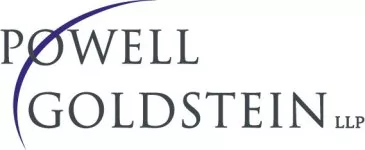Against the backdrop of today's tightening initial public offering and credit markets, private equity firms are finding it increasingly difficult to exit their investments using traditional vehicles. The special purpose acquisition company, or SPAC, presents an intriguing exit opportunity for private equity firms looking to capitalize on the ready capital and flexibility offered by SPACs.
What are SPACs?
A SPAC is a publicly traded shell company formed by a small group of sponsors who typically serve as the SPAC's management team. Sponsors form the SPAC with the goal of acquiring an unidentified operating company, often in a stated industry. The capital needed to fund an acquisition is raised through an initial public offering, or IPO, of the SPAC's securities. In a typical IPO, the SPAC issues units at an offering price ranging from $6 to $10 per unit. A unit generally consists of one share of common stock and one or two warrants to purchase one share of common stock at a discounted price upon the later of the completion of a business combination or the first anniversary of the IPO. On average, 98% to 100% of the proceeds raised in the IPO are held in trust by the SPAC to finance a business combination. SPACs usually have between 18 to 24 months to finalize a business combination. A majority of the voting SPAC shareholders must approve the business combination with no more than 20% of the dissenting shareholders exercising their conversion rights. If a business combination is not consummated within the applicable period, the SPAC will be forced to dissolve and return the funds held in trust to investors.
SPACs and Private Equity
The instability plaguing today's credit and initial public offering markets has negatively impacted a private equity firm's ability to exit its investments. Over the past year, the number of deals in which private equity firms sold controlled companies to other buyout shops decreased by approximately 80%, while global IPOs have dropped approximately 35% in dollar volume.
As a result, private equity firms have been forced to investigate non-traditional exits for their investments, including business combinations with SPACs. SPACs have substantial pools of capital generated by their IPOs that must be put to work within a set time frame to avoid liquidation. In the past five years, approximately 14 SPACs failed to consummate business combinations and returned a total of $1.2 billion to investors while currently, seven SPACs are in liquidation. Private equity firms have recently found success in capitalizing on a SPAC's need to spend its money quickly. In the past two years, eleven SPACs have acquired private equity controlled U.S. companies with deal values totaling approximately $3.6 billion.
Characteristics of SPACs that are potentially attractive to a private equity firm include:
- Flexible Acquisition Terms and Increased Earning
Potential. A business combination with a SPAC can be
structured as a reverse merger so that a private equity firm
can cash out a portion of its investment in a portfolio
company through a stock sale while retaining an equity
interest in the resulting public company. By retaining an
equity interest, the private equity firm stands to benefit
from future growth of the merged entity, which is often
driven by a capital infusion produced by the exercise of
warrants sold in the SPAC's IPO.
- Greater Certainty on Financing and
Pricing. A typical IPO takes months to complete and
is subject to the vagaries of the capital markets. Because a
SPAC has already raised the necessary capital to fund the
transaction, combining a portfolio company with a SPAC
enables the private equity firm to avoid the uncertainty
caused by market fluctuations between the time of initial
registration and SEC effectiveness of an IPO.
- Time Constraints. Because SPACs are
required to consummate a business combination within a stated
period, private equity firms may have leverage in negotiating
a deal with a SPAC that is nearing the end of its lifecycle.
Furthermore, since a private equity firm likely will have
expended large amounts of resources to increase the value of
its portfolio company, the portfolio company may be a more
attractive target for a SPAC that has a limited amount of
time to identify, investigate, and gain approval of a
business combination.
Although SPACs may present an appealing opportunity for private equity firms seeking to liquidate some or all of their interest in a portfolio company, there are certain features of SPACs that should be taken into account when contemplating such a transaction. Most important is that a proposed business combination typically requires the support of a majority of the SPAC's shareholders, with no more than 20% of the dissenting shareholders exercising their conversion rights. As a result, private equity firms must appreciate the risk that a proposed transaction will not be approved by the SPAC's shareholders or that the private equity firm will be forced to incentivize the SPAC's shareholders to facilitate the approval of the transaction.
The content of this article is intended to provide a general guide to the subject matter. Specialist advice should be sought about your specific circumstances.

